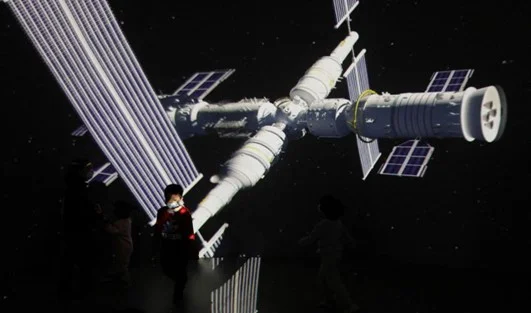Science and Technology
In News: India-China dispute casts gloom over space project.
- Tension between India and China since May 2020 is worrying Indian astrophysicists involved in an ambitious project to install an India-made spectroscope aboard the developing Chinese space station, Tiangong.
- Scientists at the Indian Institute of Astrophysics (IIA), Bengaluru, were among nine groups selected from 42 applicants in 2019 as part of a United Nations-led initiative that invites research teams from all over the world to compete for an opportunity to design payloads that will be shuttled to Tiangong aboard rockets of the Chinese Manned Space Agency.
- The project, called Spectrographic Investigation of Nebular Gas (SING), also involves collaboration with the Institute of Astronomy, Russian Academy of Sciences, and has been designed and developed by research students at the IIA.

- The SING project would be the first space-collaboration involving India and China, and primarily deals with sending and positioning a spectrograph, an instrument that splits light into constituent frequencies and wavelengths, to study ultraviolet radiation.
- This will help analyse the make-up and sources of interstellar gas in the region that swept by the space station as it orbits around the earth.
- The Chinese T-shaped Tiangong space station, when complete, is expected to be around 20% as massive as the International Space Station, or about 460 tonnes on Earth.
- The space station consists of three modules, two of which have already been launched in April 2021 and July this year, respectively.
- The third is expected to be launched this October. It will be only the second such station after the International Space Station in orbit.
India and China have been collaborators in the past on research projects such as the Giant Metre Wave Radio Telescope, a Pune-based observatory that’s employed by astrophysicists across the world to study radiation at metre-scale resolutions to observe and analyse stars and galaxies.
Must Read: China’s space station
Source: The Hindu
Previous Year Question
Q.1) The experiment will employ a trio of spacecraft flying in formation in the shape of an equilateral triangle that has sides one million kilometres long, with lasers shining between the craft”. The experiment in question refers to (2020)
- Voyager
- New Horizons
- LISA Pathfinder
- Evolved LISA













